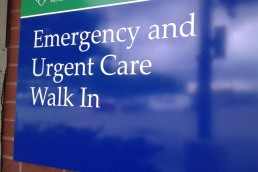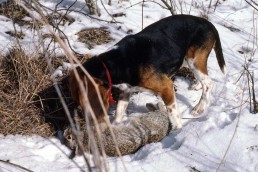An Addition to your Hunting Checklist
SHARE THIS POST
Over the years, I’ve written pieces on creating and using “checklists.” I have lists in my hunting folder for when I go turkey, deer and bear hunting. I also have a list I refer to regarding scheduled maintenance for my equipment. Naturally, what kind of an organized person would I be if I didn’t have a list for the times when I must bring food on a trip, which obviously includes a menu and a separate page categorizing needed dry goods and incidentals I’ll use to cook and serve meals. It’s no picnic when preparing lunch at camp to suddenly discover a can opener wasn’t packed or you forgot the plates and cups. These lists just help a hunting trip go smoother.
After every season, or even after a trip, I’ll go back to my computer and revise “the list” from the notes I made during the hunt. One year there were mice in the cabin we booked, so I made sure to add traps to my list. Most of the time now all I have to do is tweak my notes, but I guarantee no matter how organized you are, many do forget an important item.
One vital act that should be on the list often neglected by most outdoors people is a yearly checkup. My husband and I have made it a common practice to schedule our checkup in August right before we start getting ready for the hunting season. Visiting the doctor is never a drag because we chose a general practitioner who hunts, which means we always seems to have time to share a few field stories during the examination. Over the years, it has been an added plus if the doctor or dental hygienist we go to is also a bowhunter. However, hunting stories are always good with or without a bow.
Last year, a clinic visit turned out to be my most valuable one to date. I was diagnosed with heart disease and eventually received a pacemaker, which was inserted directly into my heart chamber. I was able to finish my deer-hunting season and I’m looking forward to bear hunting this fall. I just have to take things slower from now on. Without that yearly visit to my doctor my season could have turned out disastrous.
Are you enjoying this post?
You can be among the first to get the latest info on where to go, what to use and how to use it!
Heart disease
Every year we read stories of hunters dying of heart attacks. Many of these medical events can occur as heavy deer are being dragged out of the woods. By visiting a general practitioner once a year, you not only develop a rapport with him or her, but also establish a health history and see what you can and cannot do.
Risk factors
Being aware of the risk factors that can lead to heart disease is important to know, especially if you want to stay healthy enough to keep enjoying the outdoors:
- Age: We can’t turn back time, so with each passing year it’s even more important to get a yearly checkup in order to catch those factors which lead to heart disease, especially if you’re over 65.
- Family history: You can’t change family history, just like you can’t change age. Knowing the health history from each family member will help your doctor and you to take an active role in controlling other risk factors.
- Gender. Men have a greater risk of heart attacks than women. Even after menopause (death rate increases for women) men are still at greater risk of a fatal attack.
- Smoking: This is one of the three key risk factors for heart disease. Smoking decreases your tolerance for physical activity and even decreases HDL (“good” cholesterol). Atherosclerosis is the buildup of fatty substances in the arteries. Smoking will aggravate the symptoms from this disease, exacerbating the condition itself and is also a contributor to this condition.
- High blood pressure: There are lifestyle changes and medications that can lower the pressure of the blood before it affects the heart and other major organs.
- High cholesterol: Cholesterol (HDL, “good” cholesterol) is a waxy, fat-like substance made by the liver. When we take in more cholesterol from the food we eat (LDL “bad” cholesterol), the excess can build up on the walls of the arteries (including the heart). This leads to the narrowing of the arteries and can decrease the blood flow to the heart, brain and other organs. Diet and exercise can lower LDL (“bad cholesterol”) while raising your HDL (“good” cholesterol).
- Diabetes: Adults with diabetes are two to four times more likely to develop heart disease than those who do not have diabetes. A yearly blood test can show glucose levels and if the sugar buildup in the blood needs to be managed.
- Obesity: Those who have excess body fat (especially around the waist) are more likely to develop heart disease even if they have no other risk factors.
Reducing risks
Diet, nutrition and exercise can reduce the risks of heart disease. Healthy eating means making healthy food choices. My doctor recommended several ways to help me with my lifestyle changes. He also recommended a nutritionist to assist me with making a plan for preparing healthy meals. If you’re over 40 or have multiple risk factors, now is the time to work closely with your doctor to assess the risks and then make a plan to keep the risks low while you’re afield. Prevention is critical because many “first-ever” attacks are fatal or disabling.
Bowhunting is a large part of my life. My days of dragging large deer out of the woods by myself are over, but not shooting them is.
MWO
SHARE THIS POST
Did you enjoy this post?
You can be among the first to get the latest info on where to go, what to use and how to use it!
Marlene Odahlen-Hinz
Marlene Odahlen-Hinz is an accomplished bowhunter and outdoor writer. She has taught many women the art of archery and has been inducted into the Minnesota Archery Hall of Fame.



